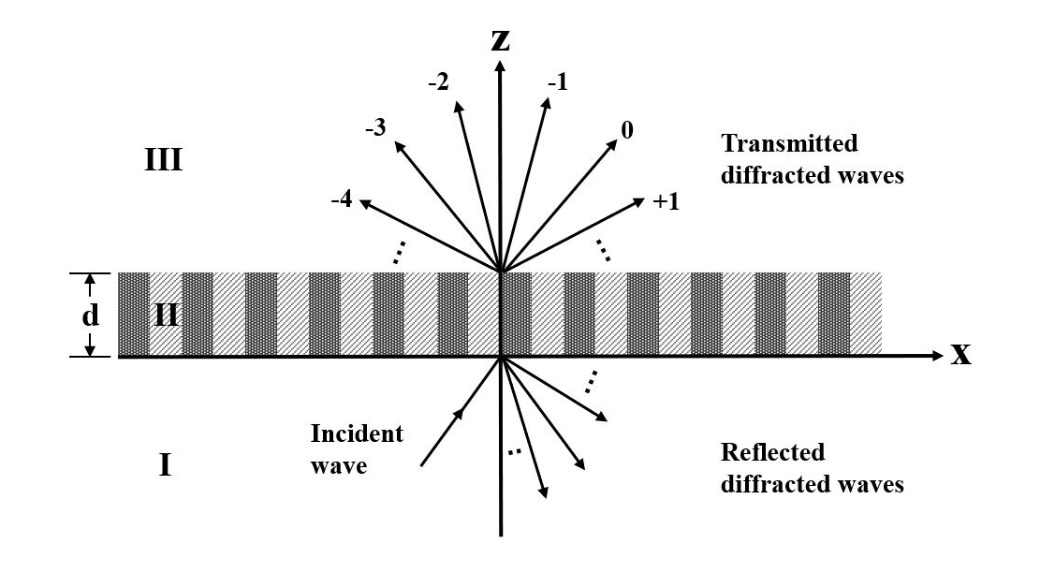Acoustic gratings have attracted great attention because of the wide applications in acoustic collimation, focusing and imaging. A rigorous analysis model with waveguide modes was proposed to solve the diffraction of acoustic gratings made of perfect rigid boundaries, but could not solve the diffraction of parity-time-symmetric acoustic gratings without rigid walls.
Researchers from the Institute of Acoustics of the Chinese Academy of Sciences (IACAS) proposed a rigorous coupled-wave analytical method to analyze the diffraction of acoustic parity-time-symmetric gratings.
Researchers expanded the sound pressure in every region as Fourier series to solve the diffraction sound field, and discussed the diffraction properties of parity-time-symmetric acoustic gratings using the rigorous coupled-wave analysis (Figure 1). As shown in Figure 2(a), the total diffraction efficiency was greater than 1 for positive incidence, which indicated that the gain played a leading role in the propagation process. For negative incidence, the total diffraction efficiency was lower than 1 before the DVP and higher than 1 after the DVP. In Figure 2(b), the diffraction efficiency of +1st order was suppressed completely when the modulation ratio was 0.99. In Figure 2(c) and (d), the sound energy was mainly localized in the gain parts (Part 1 and 2) for positive incidence, while the sound energy was evenly distributed in the gain (Part 1 and 2) and loss parts (Part 3 and 4) for negative incidence. Figure 3 presented the relationships between the modulation amplitude and the modulation ratio of the DVP for different modulation approaches.
The diffraction of acoustic gratings without rigid walls could be analyzed quickly and effectively by the method of rigorous coupled-wave analysis. The diffraction properties of parity-time-symmetric gratings were discussed systematically using this method.
The research, published online in Journal of the Acoustical Society of America, was supported by the National Natural Science Foundation of China.

Figure 1. Geometry for an acoustic diffraction grating. (Image by IACAS)

Figure 2. (a) Total diffraction efficiency, (b) diffraction efficiency of +1st order, (c) amplitude of sound pressure in one period with positive incidence, (d) amplitude of sound pressure in one period with negative incidence. (Image by IACAS)

Figure 3. Relationships between the modulation amplitude and the modulation ratio of the DVP in the case of two-beam diffraction. (Image by IACAS)
Reference:
YANG Yuzhen, JIA Han, YANG Jun. Study on asymmetric diffraction of acoustic parity-time-symmetric gratings using rigorous coupled-wave analysis. Journal of the Acoustical Society of America 2020, 148(1), 33-43. DOI: 10.1121/10.0001513.
Contact:
ZHOU Wenjia
Institute of Acoustics, Chinese Academy of Sciences, 100190 Beijing, China
E-mail: media@mail.ioa.ac.cn


